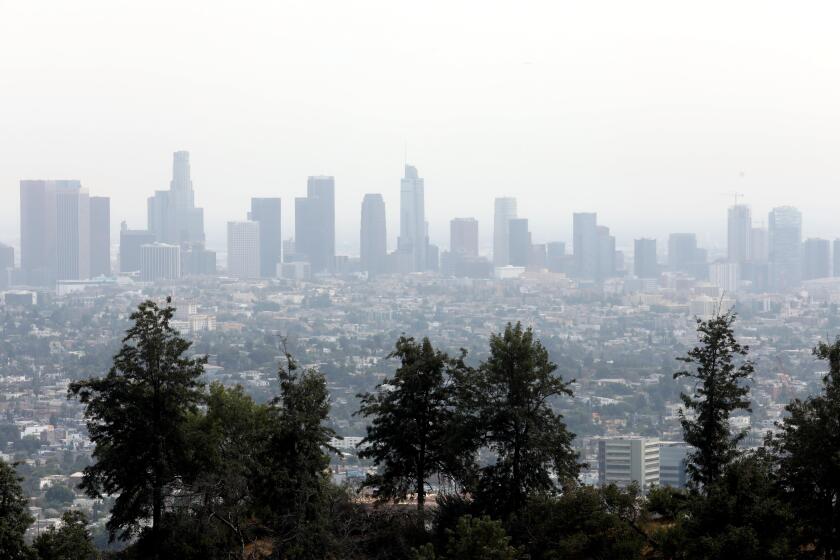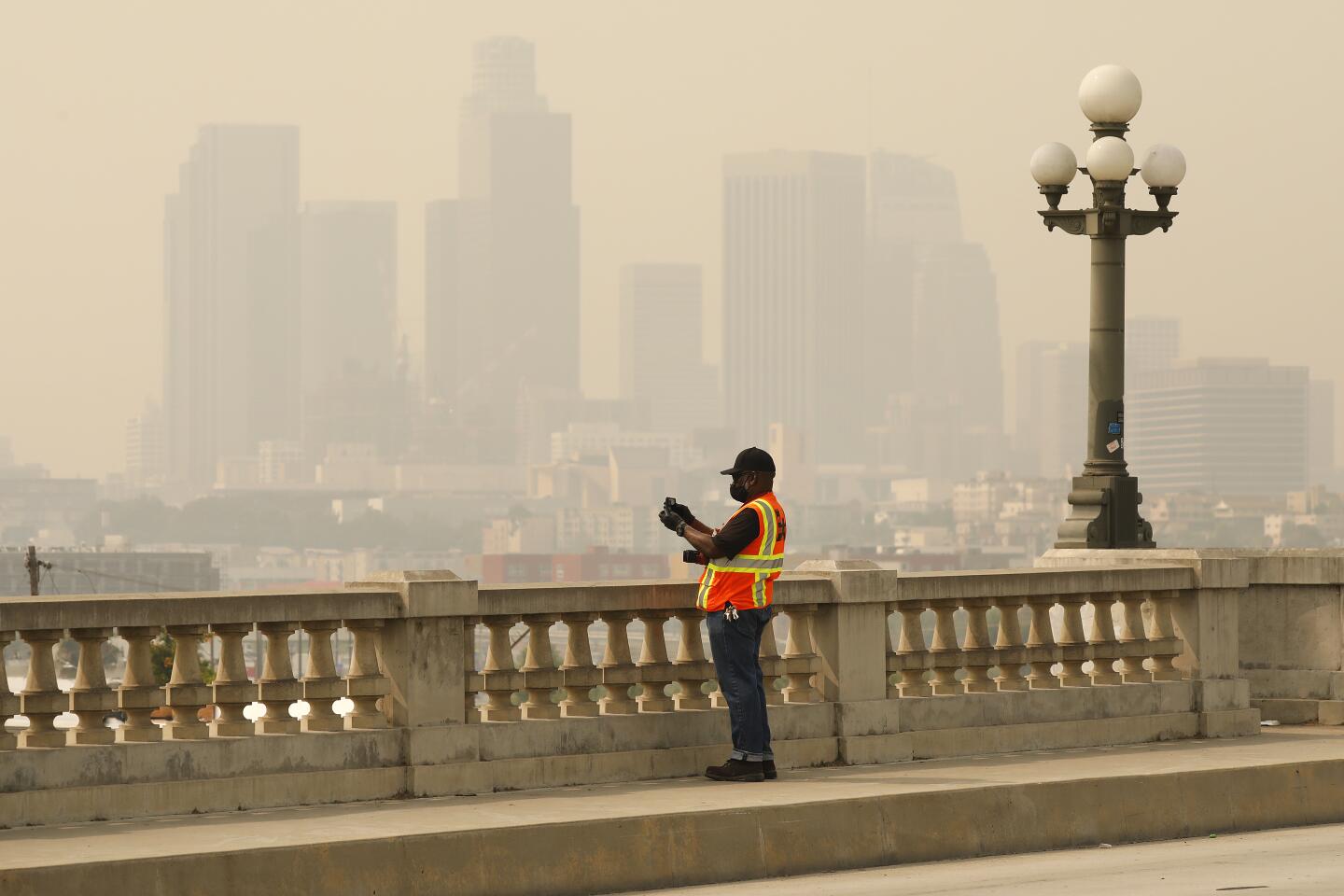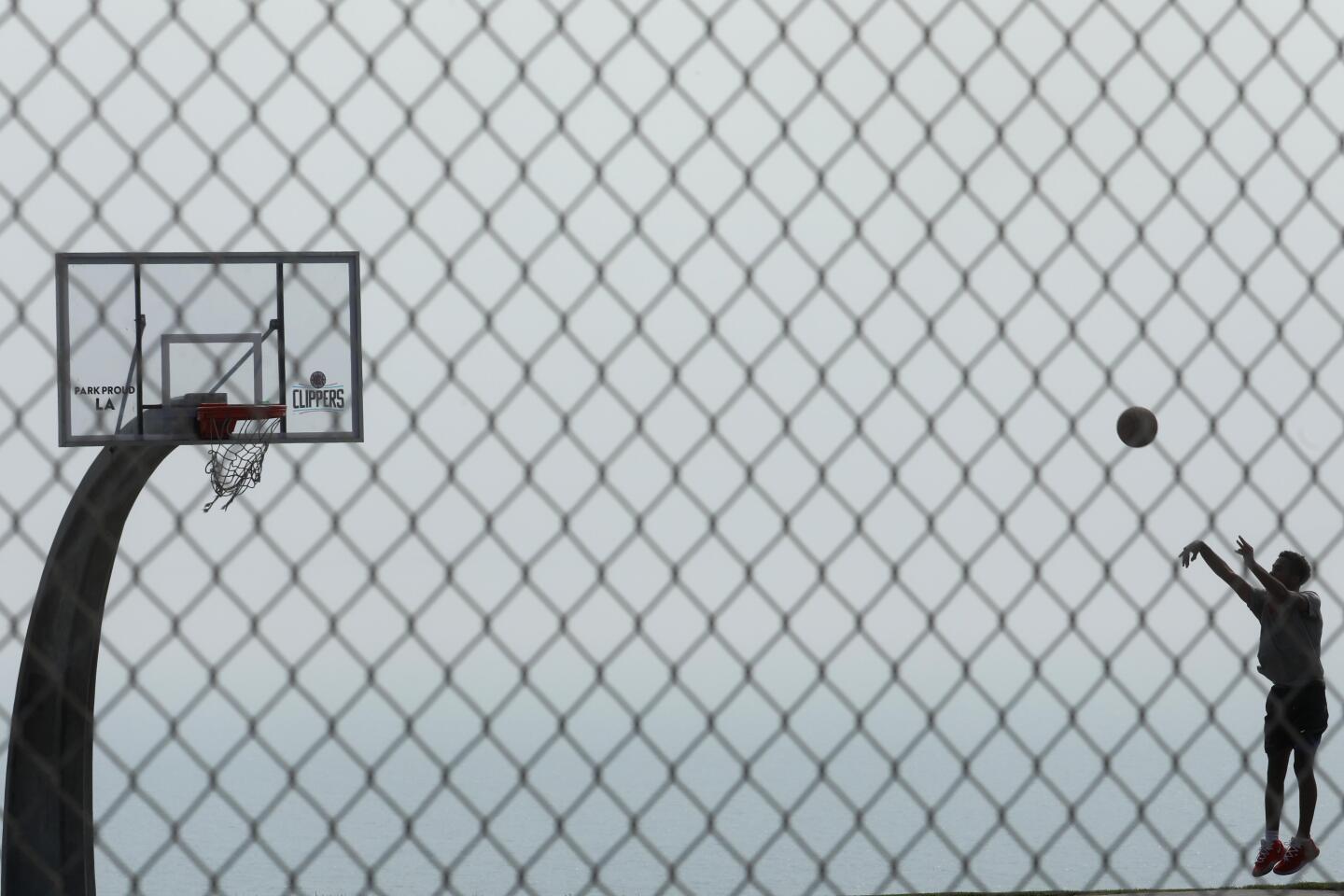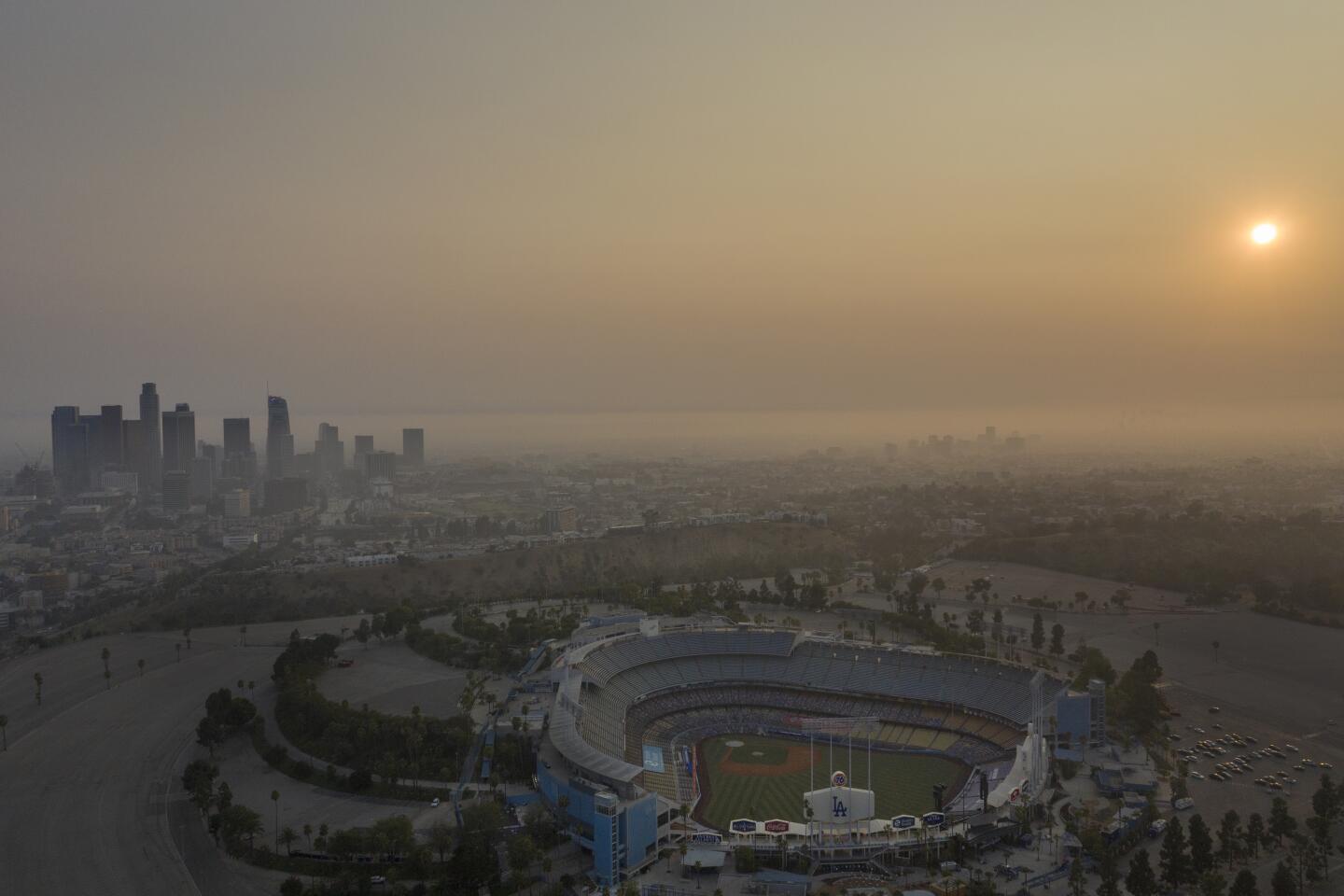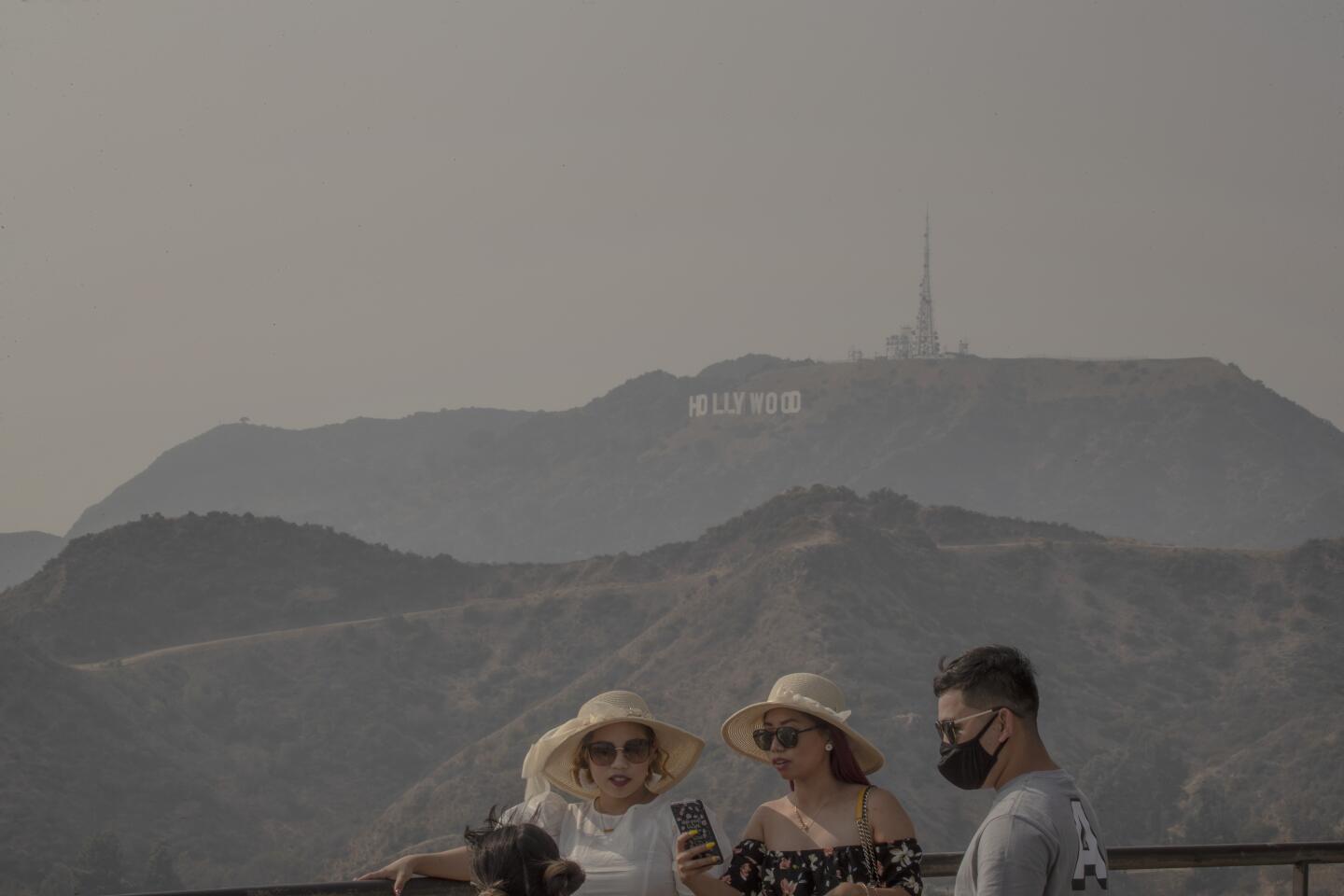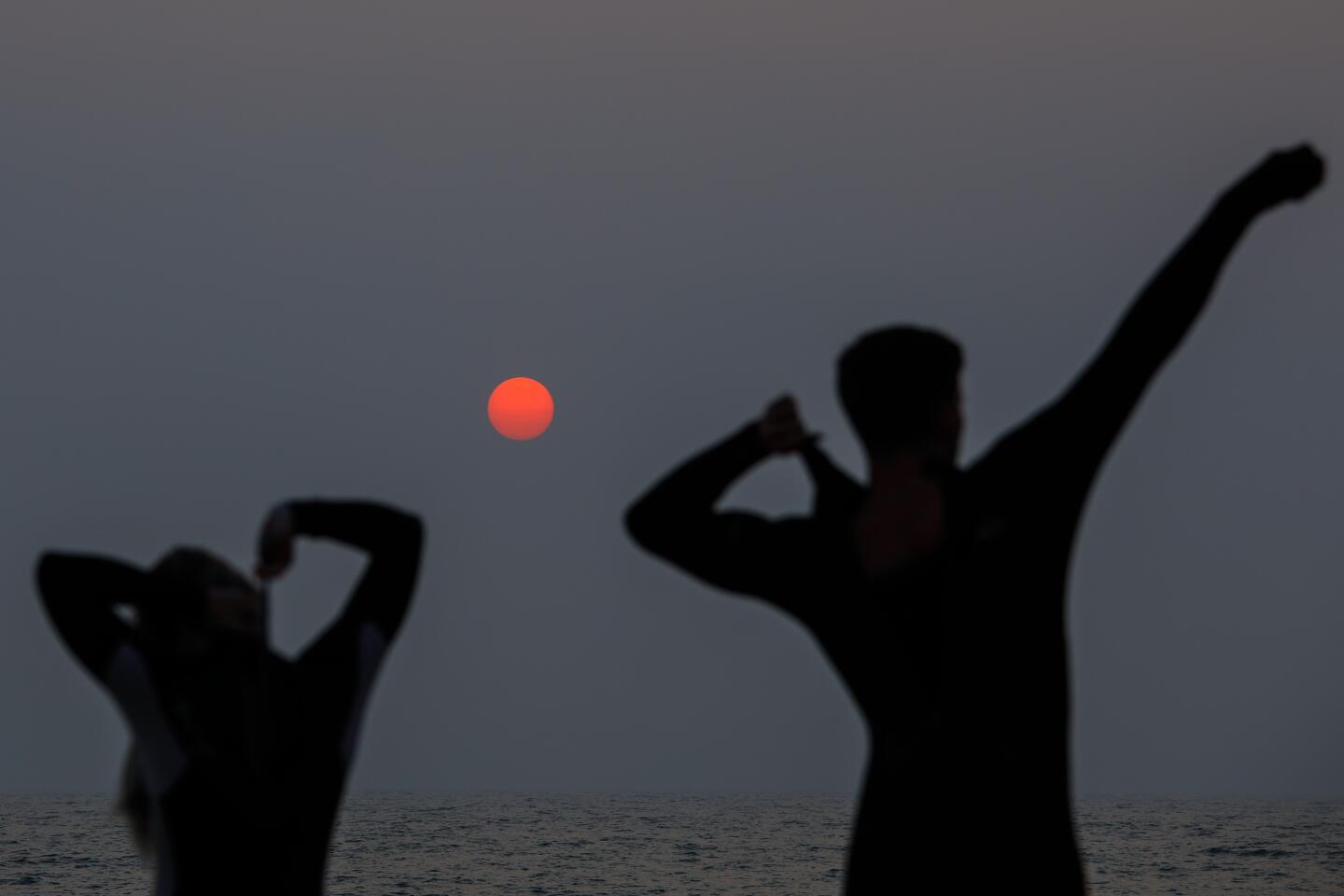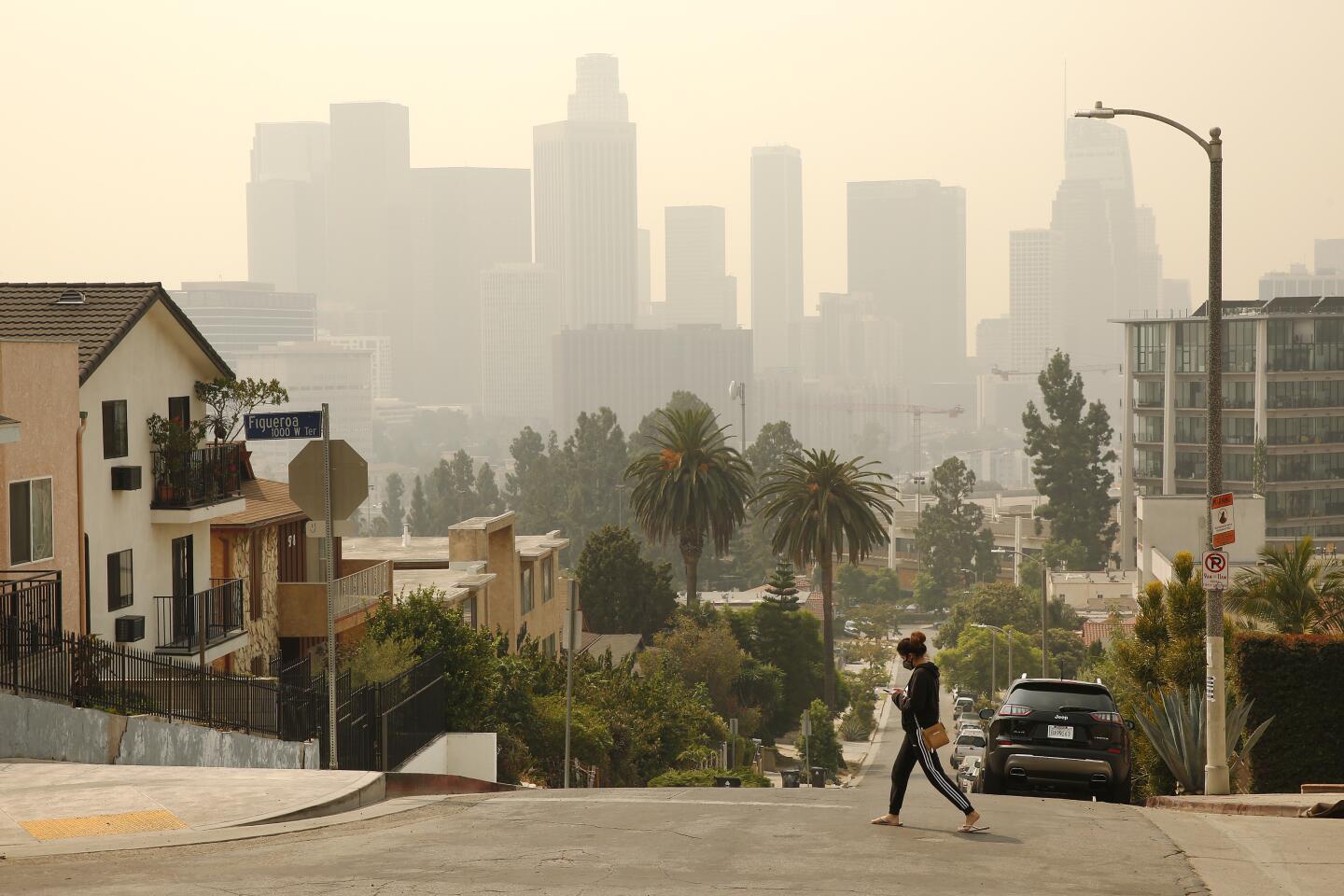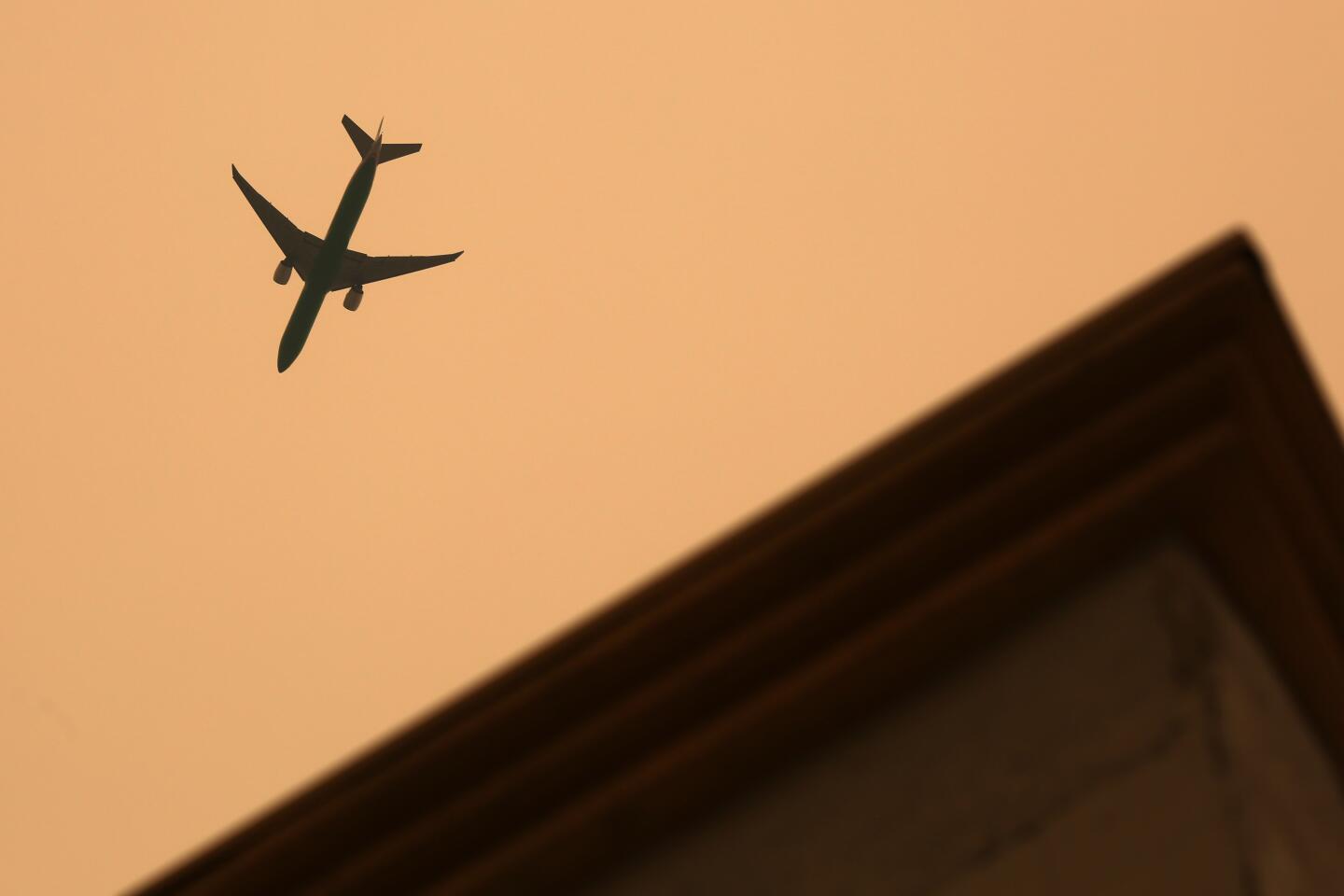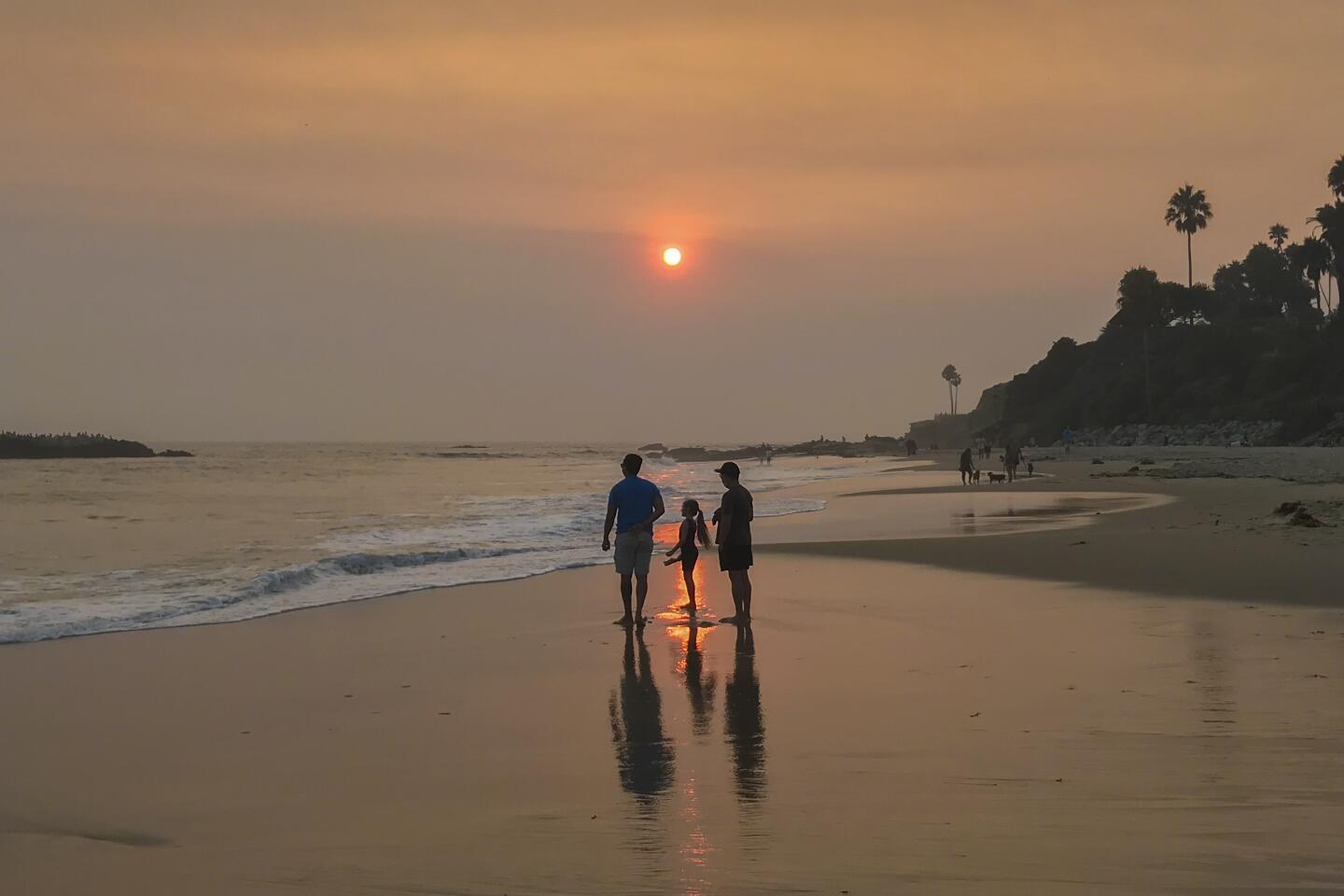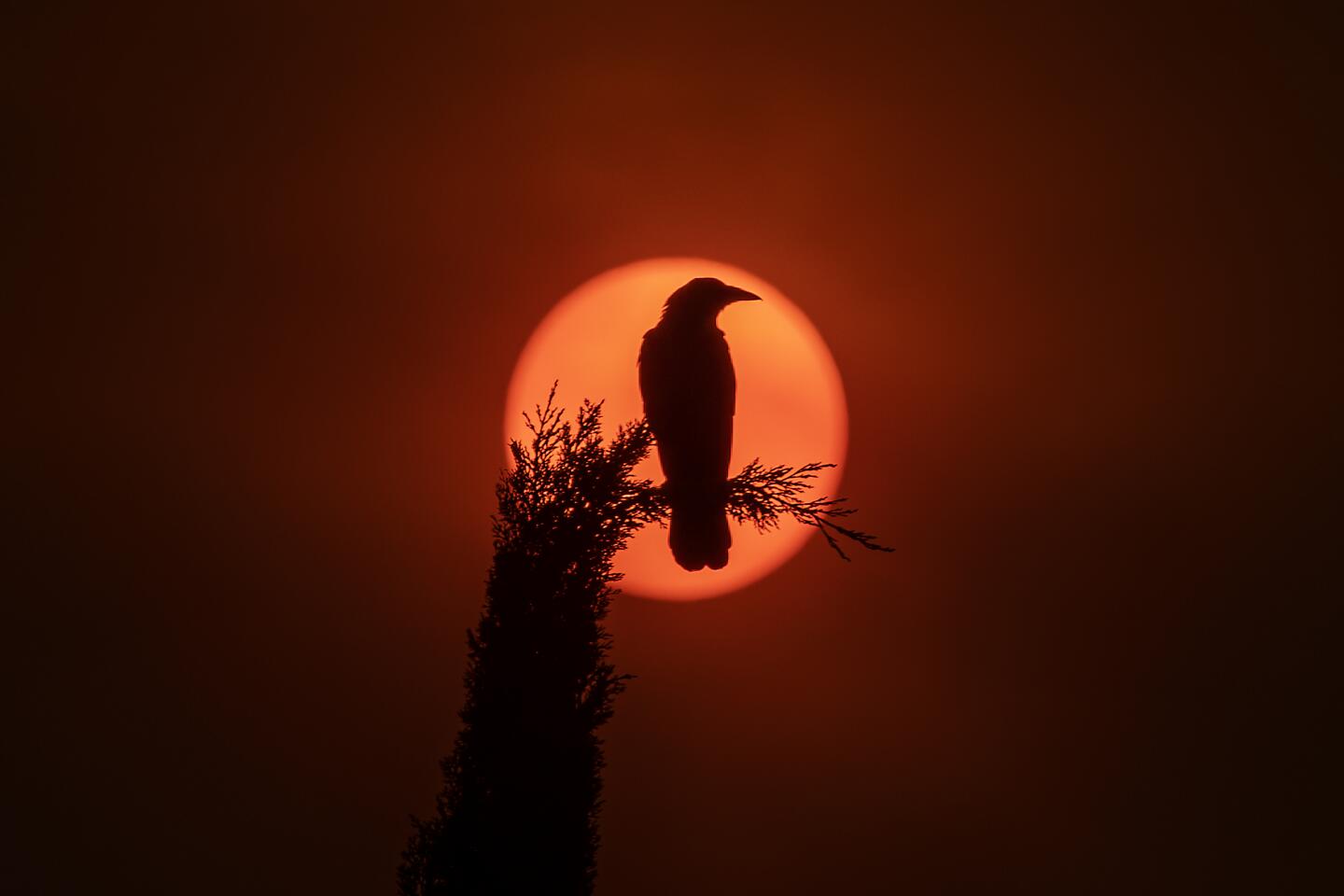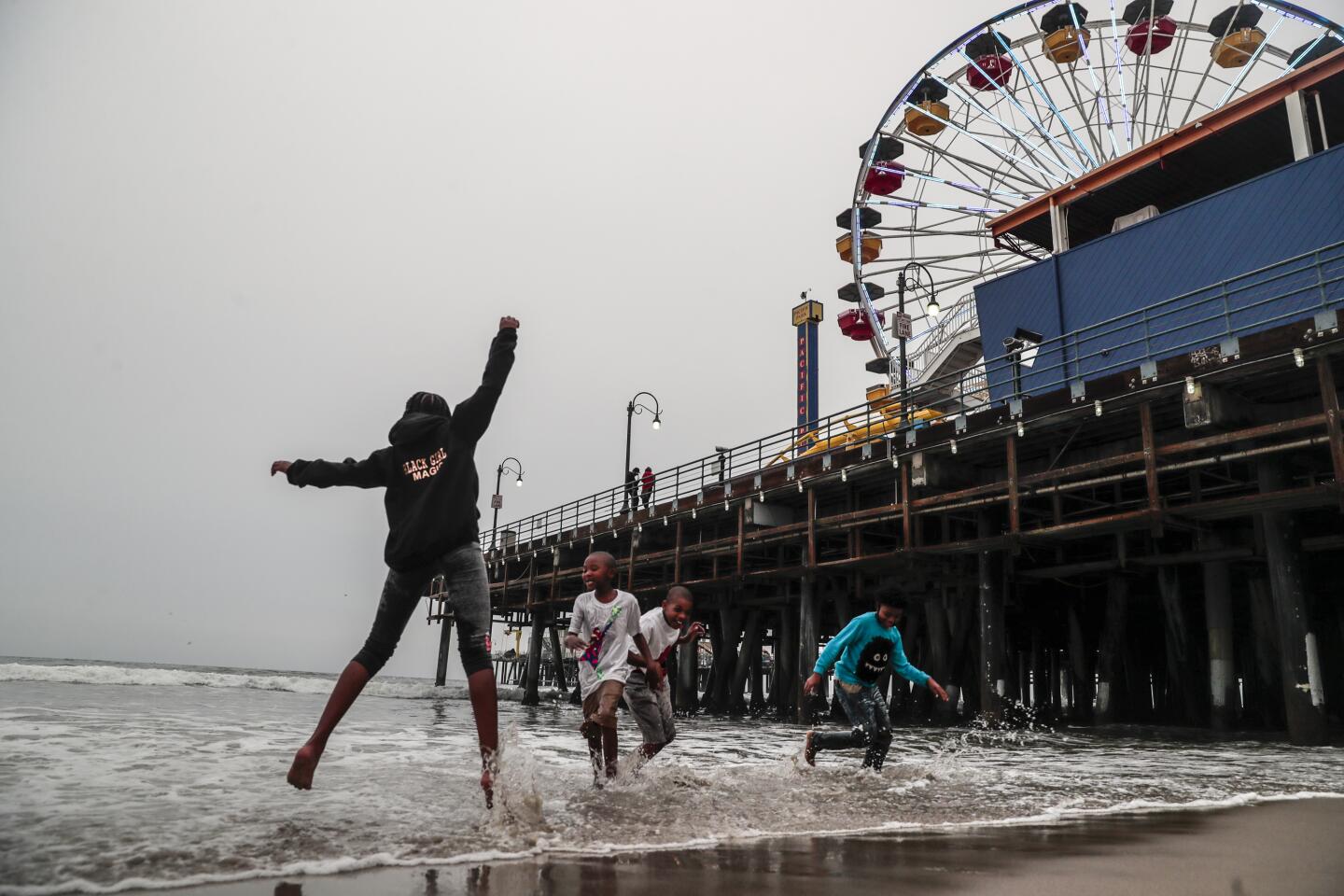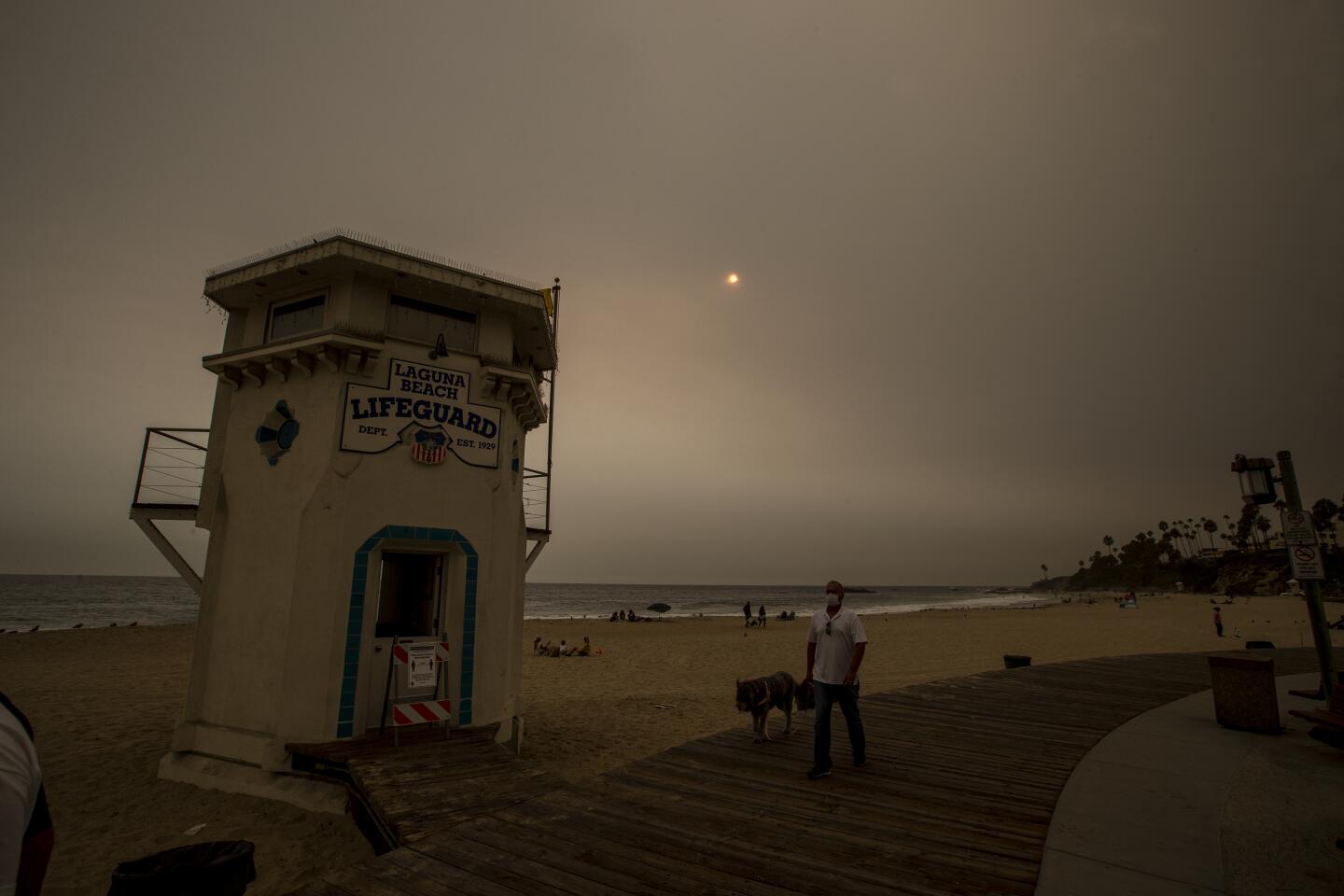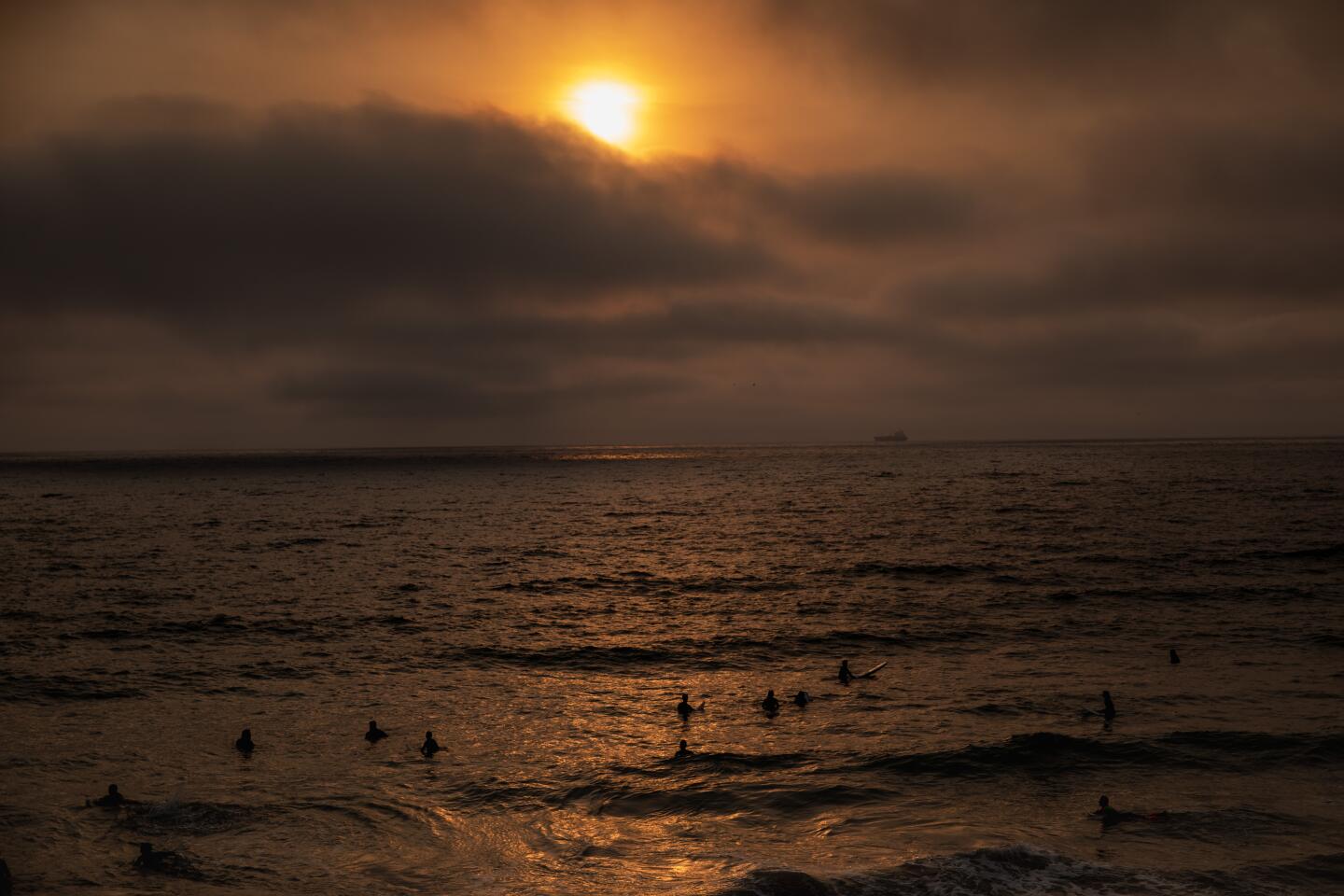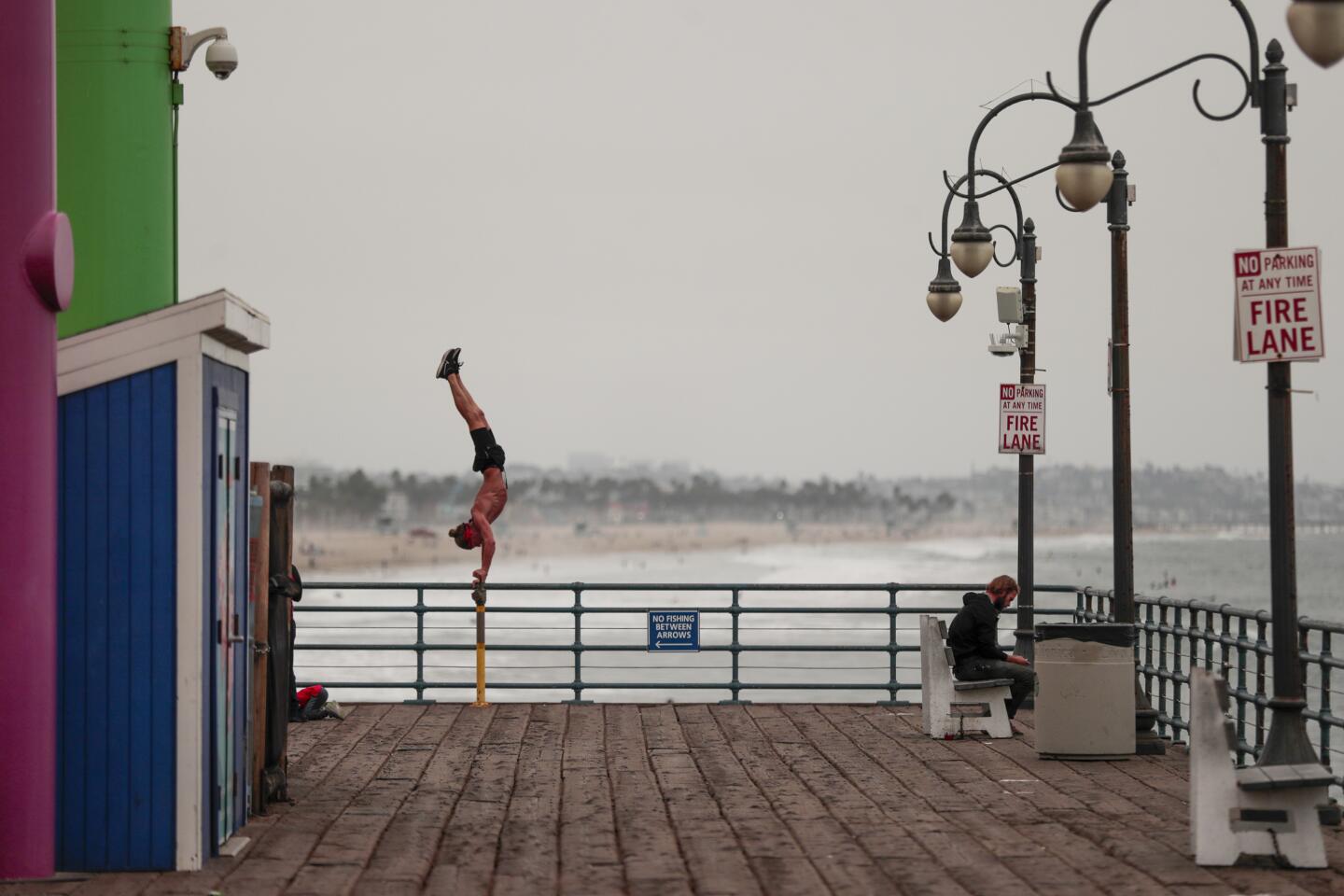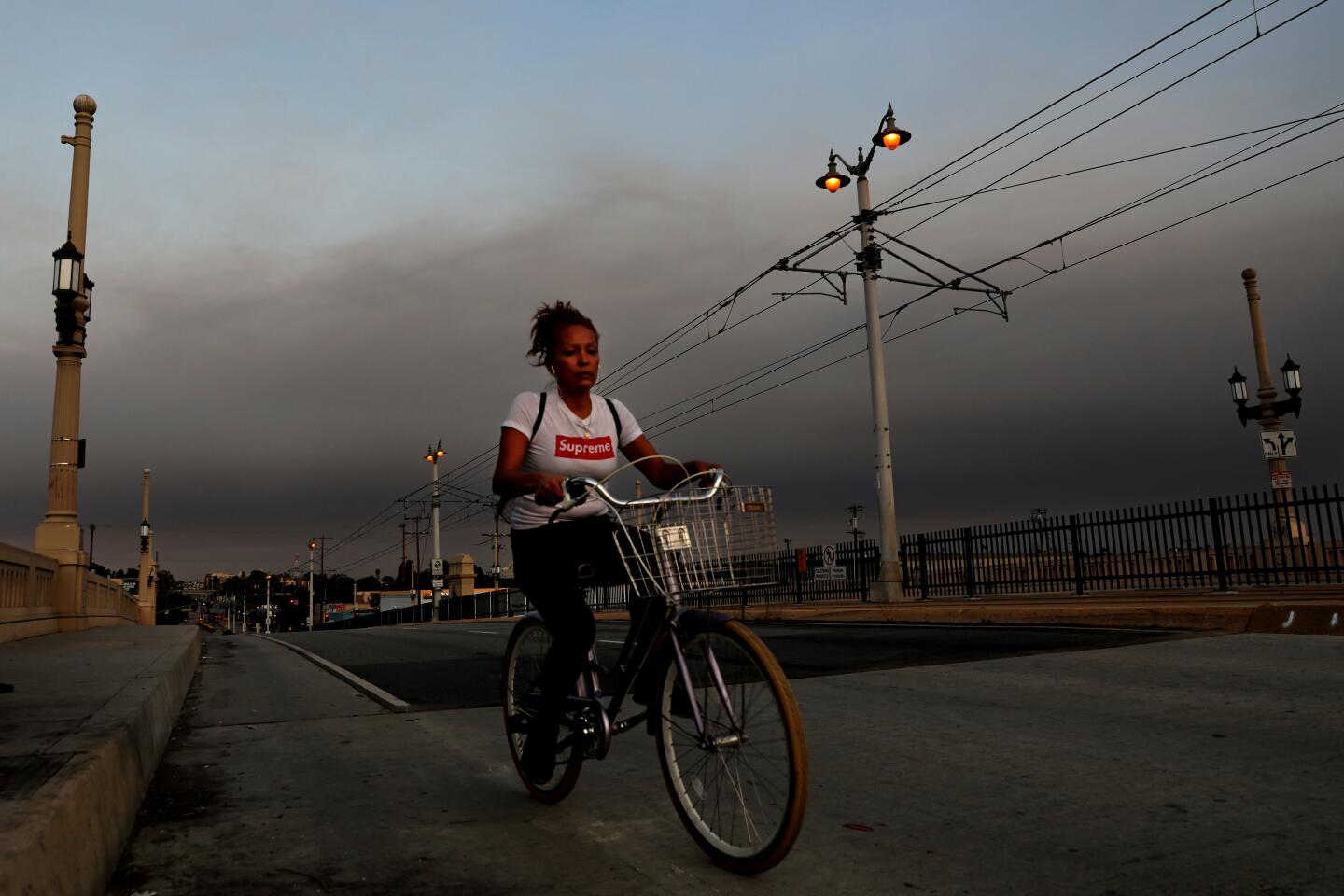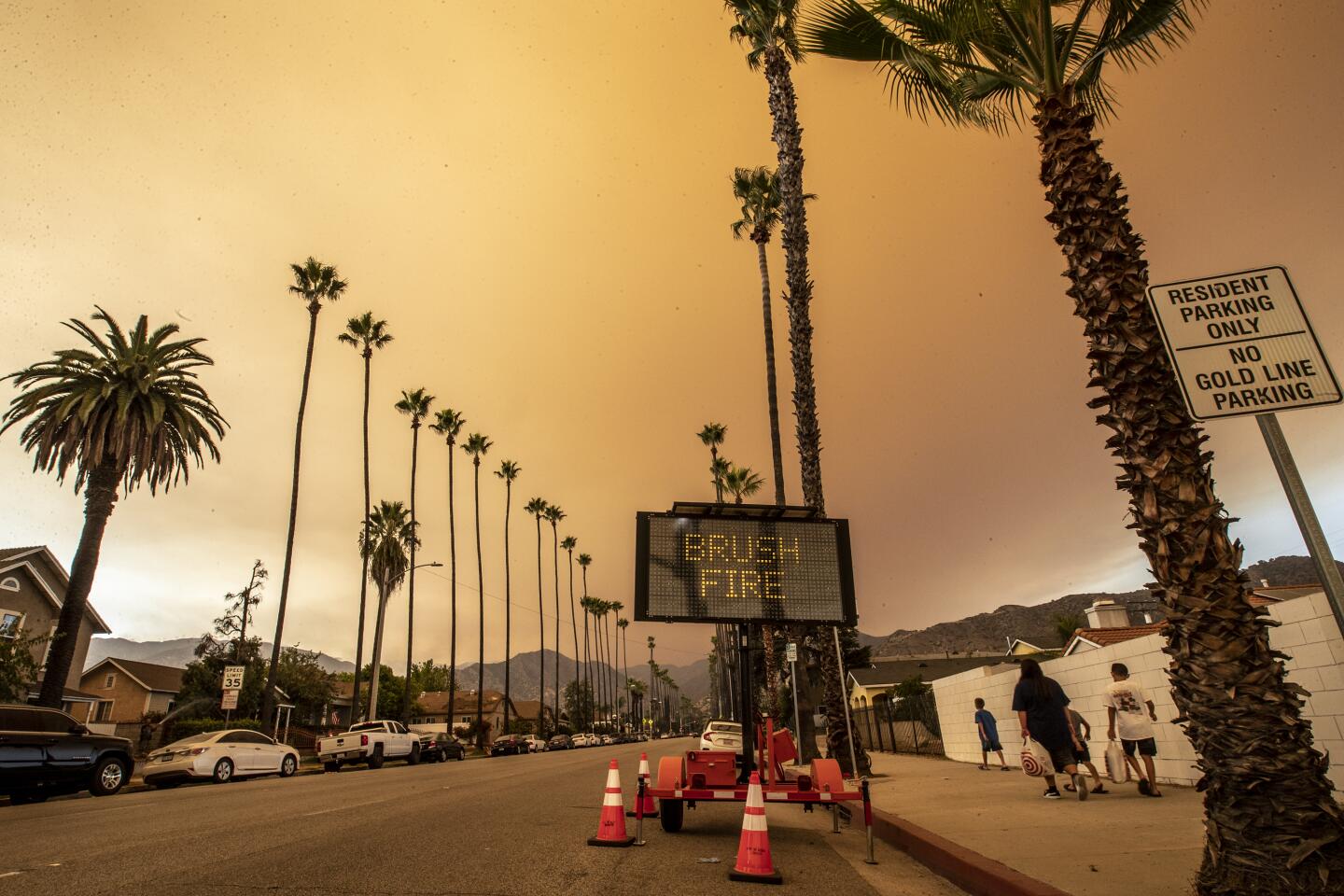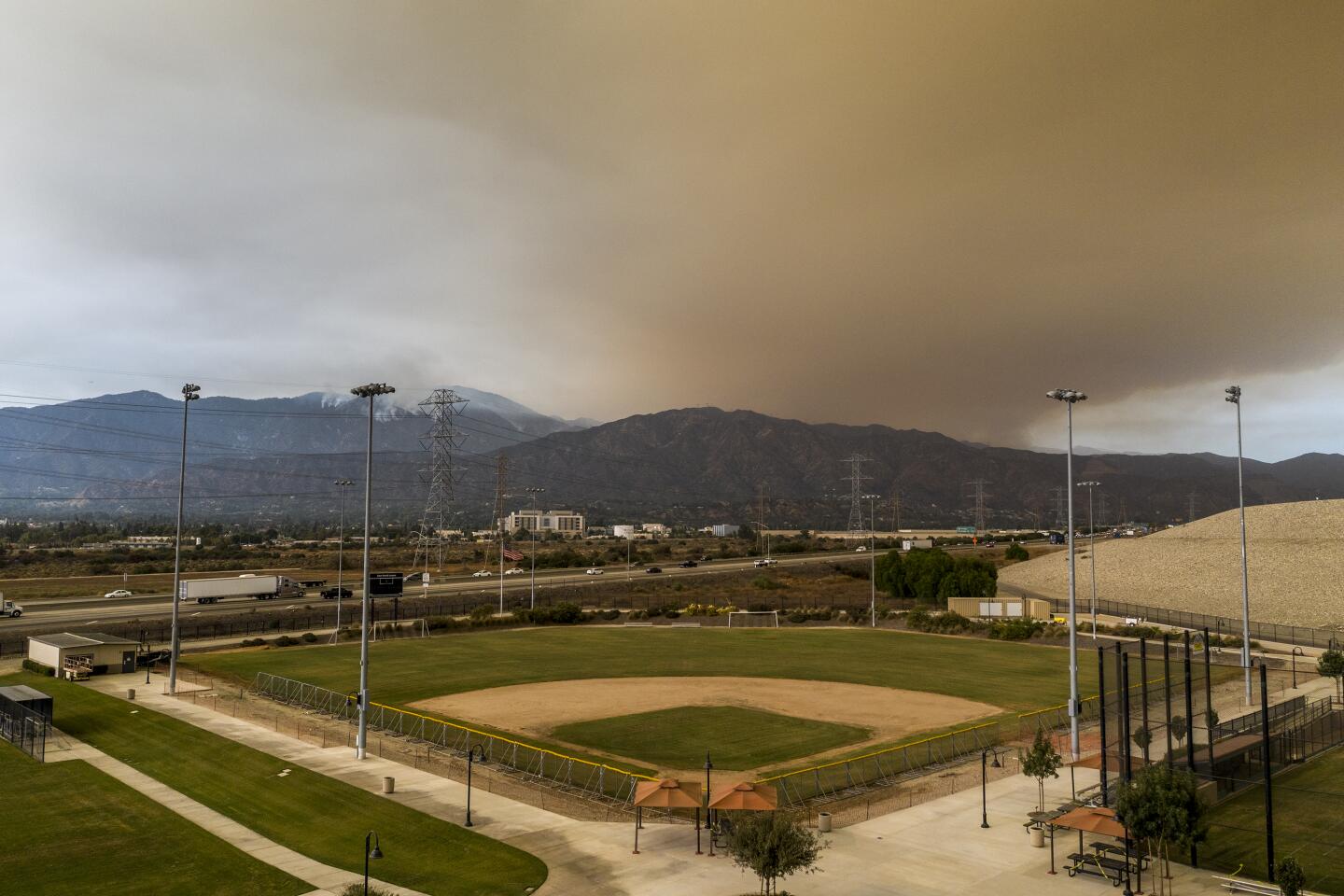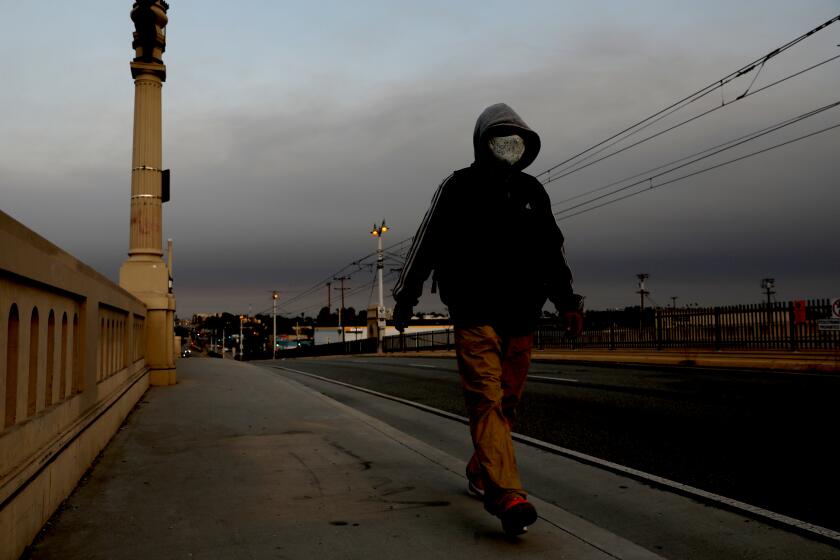Air quality nosedives across Southern California, with smoke forecast through the weekend
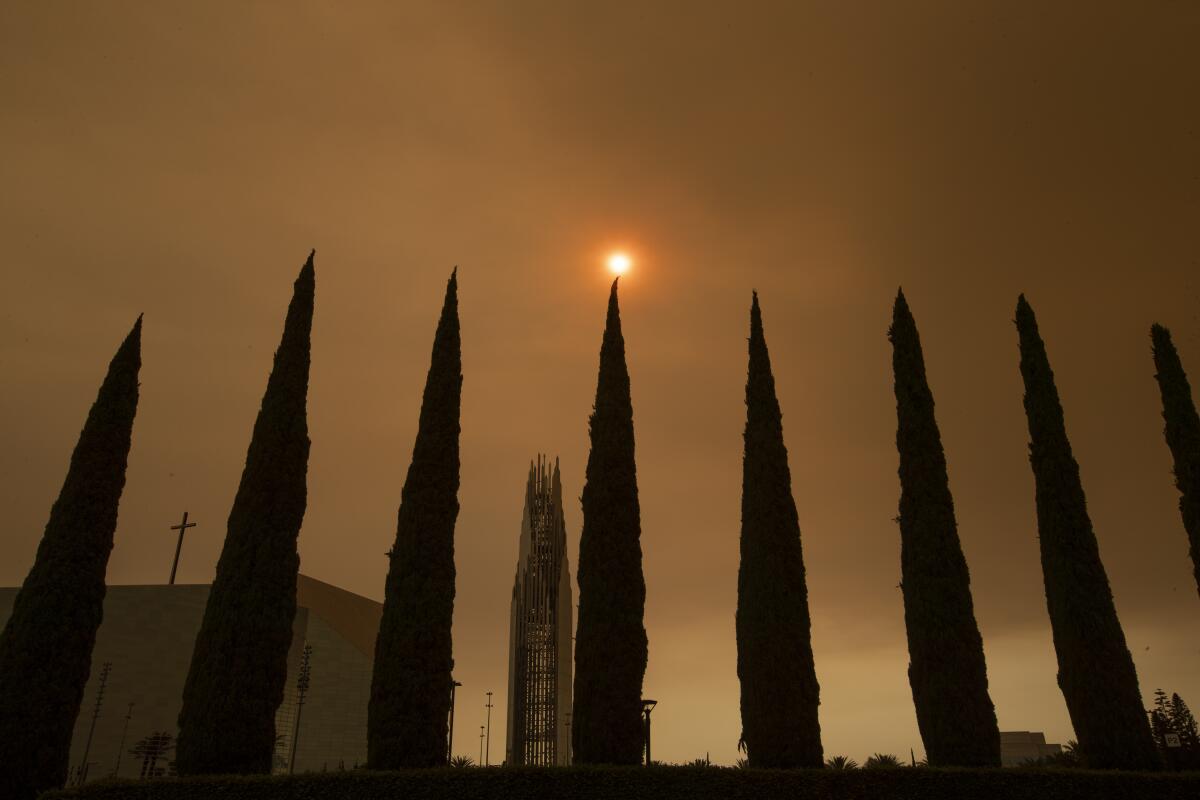
- Share via
Southern California air quality took a nosedive Friday as smoke from wildfires up and down the state choked the region with unhealthy levels of lung-damaging pollution.
The worst pollution since the record-setting firestorm began last month has been in the Bay Area and the Central Valley, where millions have spent weeks exposed to air made unhealthful by wildfire smoke.
The smoke has been so thick in some areas that it’s been in the “very unhealthy” or even “hazardous” range on the Air Quality Index. Southern California had been faring better, despite the massive blanket of smoke flowing over the entire West Coast and extending far out over the Pacific Ocean.
Things took a turn for the worse Friday, with levels of fine particle pollution — tiny, health-damaging soot particles known as PM2.5 — violating health standards across most of the Los Angeles Basin.
As of Friday afternoon, pollution was highest in areas of the San Gabriel Valley downwind of the Bobcat Fire, where PM2.5 was in the “very unhealthy” range. Air quality was unhealthy across much of the Los Angeles area, including Central and South L.A. and southeast L.A. County.
Smoke advisories will remain in effect throughout the day and likely into the weekend, said Philip Fine, deputy executive officer of the South Coast Air Quality Management District.
Huntington Gardens has closed for the weekend; the Arboretum and Descanso Gardens closed Friday
Fine said the unpredictability of wildfires — including how long they will burn, how hot they will be and how much smoke they will create — make it difficult to forecast air quality beyond one or two days. But, he said, air quality over the weekend will likely not be great.
“Throughout Southern California, everybody is experiencing this,” Fine said. “It looks like it’s overcast, but a lot of that is smoke from the Northern California and Oregon wildfires. They have created a plume up and down the West coast that’s over a thousand miles wide.”
The plume is “generally moving south,” he said, although that can change at any moment.
“If you’re looking at the air monitoring data in northern California and Oregon right now, I’ve never seen anything that widespread and bad,” Fine said. “Thankfully, we’re not experiencing it at that level down in Southern California, at least [not] as widespread.”
Yet poor air quality is being felt by many people in the areas near the Bobcat fire.
Smoke has contributed to the closure of eight parks in Los Angeles County: Eaton Canyon, Devil’s Punchbowl, Frank G. Bonelli Regional Park, Lario Staging Area, Marshall Canyon, Peck Road Water Conservation Park, San Dimas Canyon Natural Area and Santa Fe Dam Recreation Area.
Here is some general advice from the Air Quality Management District, the Los Angeles County Department of Public Health and the Centers for Disease Control and Prevention:
Tips:
- Stay indoors, if possible.
- Keep windows and doors closed.
- Check local public health alerts and the Southern California air quality map.
- Find an air-conditioned place, like a designated L.A. County Cooling Center.
- People with heart or lung disease (including asthma), the elderly and children should take extra precautions, as they may be more likely to experience poor health if they breathe in wildfire smoke.
- Avoid vigorous physical activity.
- Run your air conditioner if you have one. Make sure it has a clean filter and that it is recirculating the indoor air to prevent bringing additional smoke inside.
- Create a clean air space in your home by using a portable air cleaner instead of or in addition to your air conditioner. Do this in one or more rooms with the doors and windows closed.
- Avoid using a whole-house fan or a swamp cooler with an outside air intake.
- Avoid using indoor or outdoor wood-burning appliances, including fireplaces and candles.
- Do not rely on dust masks for protection. Paper “dust masks” can block large particles such as sawdust but do not protect your lungs from the small particles or gases in wildfire smoke. Disposable respirators such as N-95 or P-100 respirators can offer some protection if they are worn properly and have a tight fit.
The air around Southern California feels like smoke soup because of wildfires. What does that mean for your health and daily routines?
As for the cloth masks many are relying on for COVID-19 protection, Fine said they’re not very effective for small particulate matter from wildfire smoke, though they may provide some relief from larger particles such as ash. N95 masks are better, but not foolproof, he said.
“The better thing to do, if you’re being exposed, if you’re feeling it in your lungs, if you see or smell smoke or ash,” he said, “is to try to stay indoors and avoid vigorous, physical activity outdoors, or even indoors in some cases.”
Extreme heat and fires have brought the worst air quality in decades to Southern California.
Fine said the confluence of so many wildfires and so much smoke is a rare combination, creating extreme conditions.
Lung-damaging ozone pollution in Los Angeles reached its highest levels in a generation and set records in other parts of Southern California during the blistering Labor Day weekend heat wave, air quality readings show.
Ozone pollution spiked to 185 parts per billion in downtown Los Angeles at midday Sunday, according to South Coast Air Quality Management District monitoring data. It was the highest hourly reading in Southern California since 2003 and the highest in downtown L.A. in 26 years.
More to Read
Sign up for Essential California
The most important California stories and recommendations in your inbox every morning.
You may occasionally receive promotional content from the Los Angeles Times.
